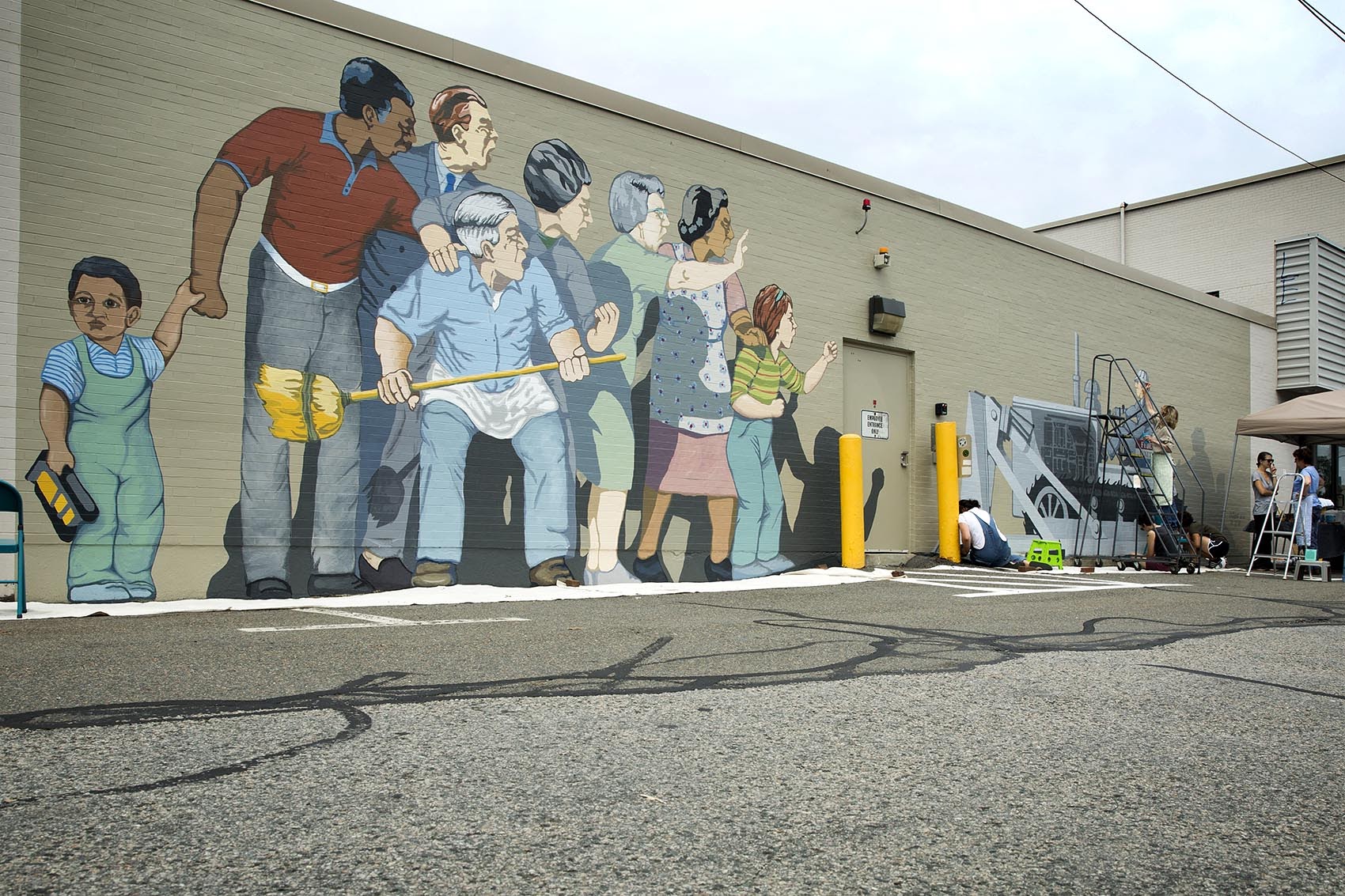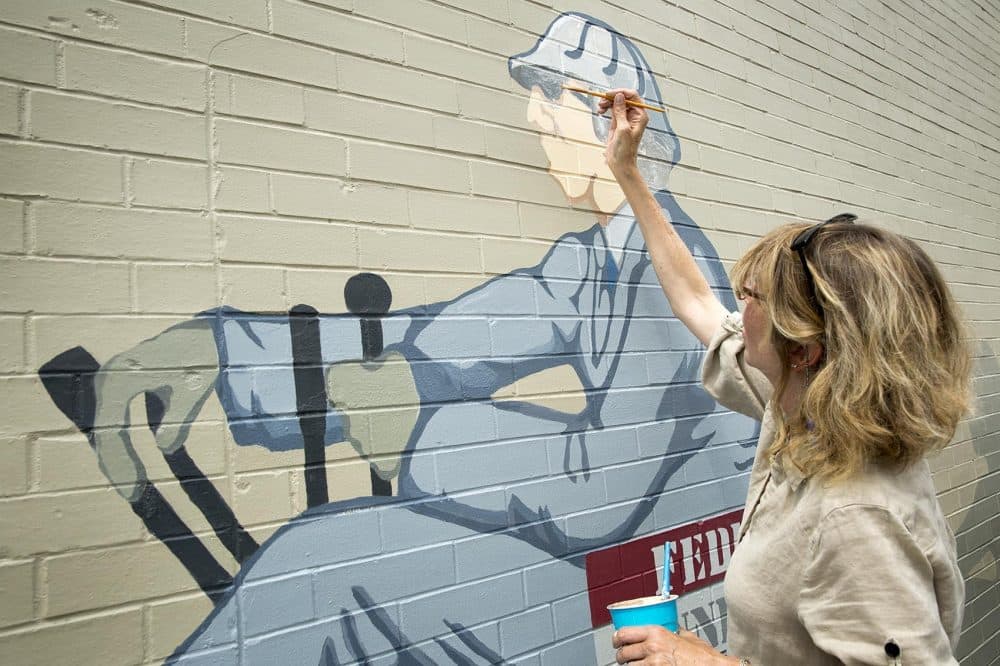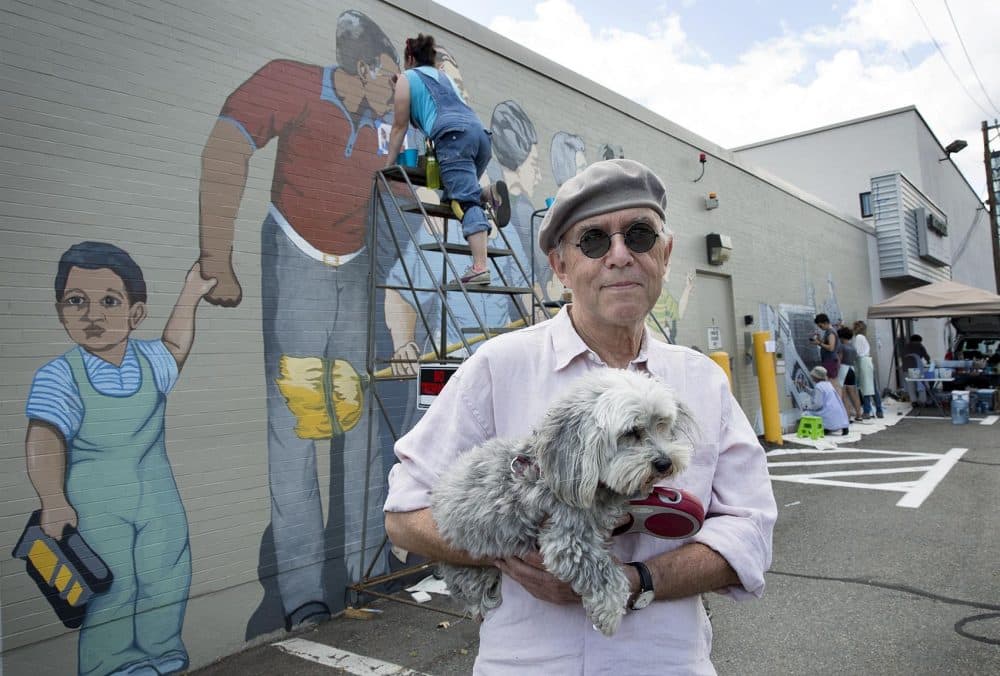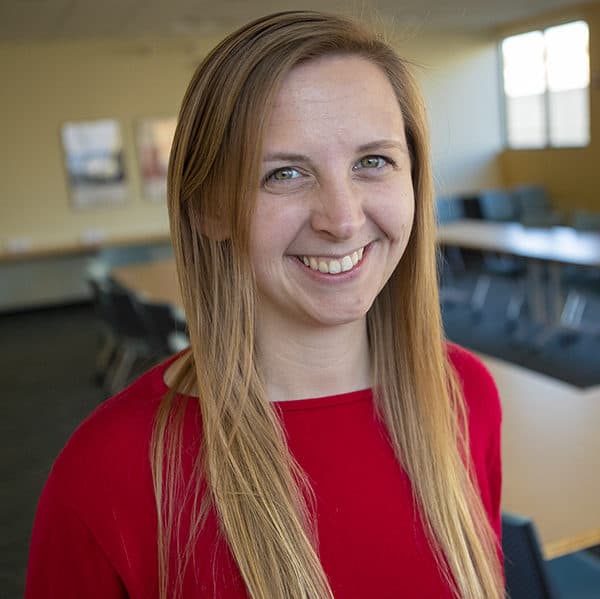Advertisement
Cambridge 'Beat The Belt' Mural Celebrates The Community That Stood Up To A Superhighway
Resume
Fifty years ago, as the protests against the Vietnam War were heating up, there was a big fight underway in Cambridgeport. This one was against a massive federal highway that was slated to run right through the neighborhood and demolish hundreds of homes.
It's something not a lot of people around today remember — because of the community organizers who prevented it from getting built. But there is a mural, titled "Beat the Belt," tucked away off Memorial Drive, to remind us of their efforts.
This summer, the Cambridge Arts Council gave the mural, originally painted in 1980 by artist Bernie LaCasse, a new life. Inch by inch, a team of artists and conservators spent weeks in the hot sun restoring the fading pastel-colored depiction on the back of the Micro Center.
On the left side of the 75-foot-long image, a diverse group of Cambridge residents hold up their fists, mouths open in anger. The figures tower over the right side of the mural, where a politician — decked out in black Ray-Bans and a grey suit — heads toward them on a bulldozer that has a sign on it reading "FEDERAL INNERBELT I-95."

Back in 1948, a multi-lane superhighway — dubbed the Inner Belt — was first proposed to more directly connect I-95 in the south to I-95 in the north. It would cut right through Roxbury, the Fenway area, pass over the Charles River, and go straight through Cambridgeport, Central Square and Somerville.
The community was never exactly on board with this plan, but opposition grew to a breaking point in the late '60s. There were community meetings, trips to the state Department of Transportation, a rally on Boston Common. A delegation even went down to Washington, D.C.
Cambridgeport resident Stephen Kaiser moved into the neighborhood as an MIT graduate student as the protests were ramping up.
"I was struck by the fact that all along my street, there was these big signs that said 'Cambridge Is A City Not A Highway,' " he remembered. "It was almost like a billboard to the world that the highway is wrong, and we're going to fight it."
The community members were emboldened by the larger movements taking hold in the late '60s. But Kaiser said the protests against the highway were more civilized.
"It was all very academic and democratic in the sense that you were debating the whole thing, arguing it — putting your case forward," he said. "While Vietnam deteriorated, with police fighting with the protesters."
In February 1970, soon after Gov. Frank Sargent took office, he declared a freeze on all highway construction within Route 128. He announced:
We've built more and more and bigger and better superhighways and expressways. They seemed the easiest, the most obvious answers to our multiplying needs. What we misunderstood was what those highways would create — massive traffic congestion. You, your family, your neighbors have become caught in a system that's fouled our air, ravaged our cities, choked our economy and frustrated every single one of us.
A decade after the Inner Belt project died, artist LaCasse, who was living in Cambridgeport at the time and now lives in Brookline, proposed a mural that would commemorate the community's success resisting the government plan.
"I think it's really important to have that sense of history, to have anything that supports activism. Especially something that supports that kind of win, where they were able to stop this stuff even though government wheels were turning to get it done," LaCasse said. "And so, if you believe in something, you just have to be able to fight for it."

The mural faded over the years, and some of the paint chipped off. But the Cambridge Arts Council wanted to restore it to make sure the sentiment of community activism was passed on to future generations — including some of the young people working on the project.
"I had no idea that it happened at all," said Nichole Speciale, a 30-year-old conservation technician from Taunton who helped pull together the restoration. "I was shocked to imagine them running a highway through Cambridge."
Today, "Beat The Belt" stands as a reminder for future generations of the legacy of community organizing in Cambridge, right in the neighborhood that was once in danger of being paved over.
The Cambridge Arts Council rededicates the "Beat the Belt" mural on Thursday, Sept. 28 at 5:15 p.m. at 730 Memorial Drive in Cambridge. And, of course, you could go check out the mural any time on the side of the Micro Center.
This segment aired on September 28, 2017.
